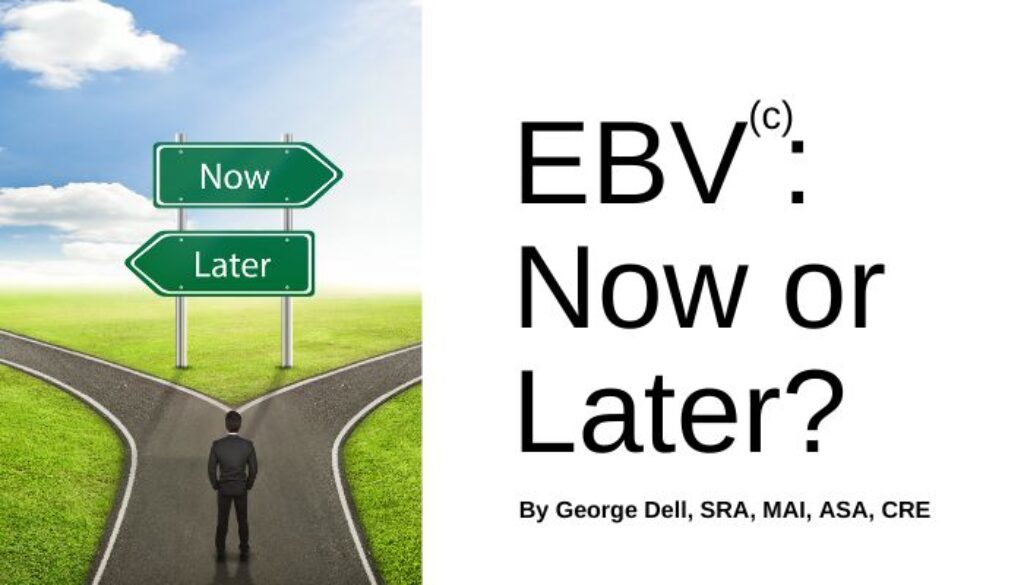EBV (Evidence Based Valuation©) is the future of professional appraisal.
EBV is the best response (and advantage) to the dramatic changes in residential appraisal practice. Change in the nature of commercial/industrial valuation will follow, as it usually does.
Editor’s Note: This is Standards, part 3.18 of George Dell’s series on How Do I Move to EBV? Links to the earlier posts are here.
Many have written and said that valuation, as an industry, is due for revolutionary change. Am I ready? How do I get ready? What’s gonna happen? Should I retire, adapt, or lead the way?
How different is EBV from legacy practices (form-filling and spreadsheeting)? Why do we call it “evidence based”? Is it part of the problem? Or part of the solution?
We have unfolded many of these question in our series on the evolution of appraisal practice.
What is EBV?
Evidence Based Valuation recognizes that the traditional “picking comps” is a form of evidence. Picking comps relies on appraiser judgment and data availability. EBV recognizes that data, models, algorithms, visualization and computer analytics — the essence of the “science of data” — do better in today’s world.
EBV sharpens appraiser judgment and critical thinking. EBV melds knowledge and computer power.
Data science explicitly recognizes the need for expert knowledge. It is not theoretical.
Why EBV now?
- Fannie Mae and Freddie Mac’s replacement for the old forms is soon.
- The application of appraisal theory has not changed in many years.
- The public trust really needs less frequent economic meltdowns.
- Bias and diversity issues, real or not, must have real solutions.
- Lenders, investors, and equity enforcers need risk measures.
- Users at different levels need understanding of valuations
- Other services, much in demand, are not possible today.
- Professional appraiser and analysts are best qualified.
- Computation algorithms and models are available.
- Accuracy and precision are also computable.
The GSE “new forms” (not forms!) are to be cloud-based and interactive. Your interface will be what is called a ‘dashboard’ – no different from what you have already used, only more and complete. Fields are even more standardized than in the past. Less words, more pick-lists.
What is left to do?
Data gathering and collection will continue, as it changes to include ‘third party’ and waivers. Data analysis will change. There are decisions to be made about:
- Which data to be included, including outlier handling, and market delineation.
- Geographic clarification, including location adjustments and similarity matching.
- Price indexing, on 100% of appraisals (instead of loose ‘time adjustments’ or avoidances).
- Separation of the ‘science’ of analytical methods and the art-experience of judgment issues.
How do I prepare?
- Gain some understanding of what is data science, and how it transforms the valuation industry.
- Understand how to properly use graphs and simple data descriptive numbers.
Find a small group of others, interested in advancing personally.
We measure markets not compare comps.

November 15, 2023 @ 11:00 am
and here I thought that appraisals had always been evidence based, at least mine were.
November 21, 2023 @ 11:40 am
I know right! Crazy. But Clear Capital is having everyone drink the Kool-Aid